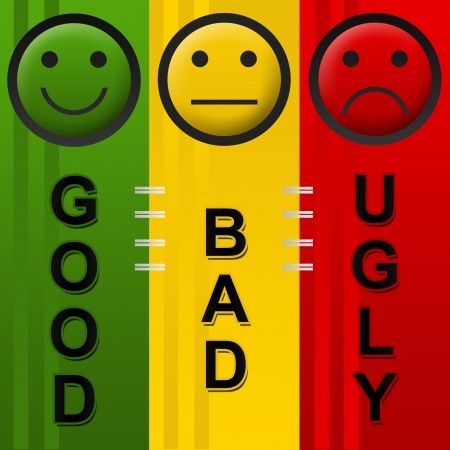 A cross-licensing patent agreement is a contract between at least two parties that grants mutual rights to both parties’ intellectual property. The agreement may be a private one between two specific companies or a small consortium of companies. Or it may be a public agreement such as a patent pool, in which IP management is shared amongst a relatively large group of patent holders who share patents. Patent pools are typically industry-based, and companies active in the sector are free to join the pool.
A cross-licensing patent agreement is a contract between at least two parties that grants mutual rights to both parties’ intellectual property. The agreement may be a private one between two specific companies or a small consortium of companies. Or it may be a public agreement such as a patent pool, in which IP management is shared amongst a relatively large group of patent holders who share patents. Patent pools are typically industry-based, and companies active in the sector are free to join the pool.
Who’s Doing It
In some industries, cross-licensing accounts for a significant share of all IP management and licensing agreements. For example, a recent study by the Toulouse School of Economics says cross-licensing accounts for 50% of all licensing arrangements in the telecommunications and broadcasting industry, 25% in the electronic components sector, and 23% in the pharmaceutical industry.
Some classic cases of IP cross-licensing include:
- Google and Samsung Electronics: These two giants signed a broad cross-licensing agreement in January 2014 that covers existing patents as well as those patents filed during the next ten years. The agreement reinforced ties between the owner of the Android operating system and the world’s largest smartphone manufacturer of the time.
- Google and SAP: In October 2015, they announced a long-term patent cross-licensing agreement that included a broad range of products and software patents.
- Apple and Microsoft: These companies have had a long-standing cross-licensing agreement since the late 1990’s. The deal covers worldwide utility patents (technical software features) and design patents (aesthetic hardware/software features).
Some well-known industry-specific patent pools are MPEG-2, DVD and RFID.
The Good…
According to a study conducted by the Boston University School of Law, in 2011 patent litigation by so-called patent trolls cost US software and hardware companies a staggering $29 billion. Although that staggering figure has been discredited, few seriously doubt the reality that patent enforcement through litigation campaigns create risk for technology users and imposes a financial burden on industry. Even more modest assessments suggest a figure that is still over $7 billion.
One of the most common motivations, therefore, for cross-licensing agreements is to avoid spending valuable resources on suing and counter-suing for alleged patent infringement. Cross-licensing allows companies to reach an out-of-court settlement in which they barter their respective IP value and rights. The infringer/competitor now becomes an ally.
But cross-licensing is not just a barter to fend off intellectual property lawyers or reduce licensing fees – it can and should be the basis of forward-looking alliances that encourage knowledge flow and spur post-licensing innovations. Studies have shown that the duopoly profit attained by cross-licensing can be greater than the profit from a monopoly scenario. Some of the key benefits of cross-licensing include:
- Bundling complementary technologies to develop a superior product.
- Enhancing interoperability among networked products.
- Gaining access to new markets.
- Lowering product development costs.
- Benefitting from the other party’s manufacturing and/or marketing capabilities to shorten time-to-market.
- Creating an IP sharing economy in which unused IP assets can be monetized, thereby increasing IP value.
It’s not only the cross-licensing parties that win. Patent cross-licensing in the auto industry, for example, has made cost-effective generic parts available to the general public. And it is generally accepted that patent cross-licensing creates an innovation ecosystem that generates novel and superior products for the benefit of all.
The Bad…
So with all of these cross-licensing benefits, what can be bad? Here are some of the disadvantages that companies contemplating IP cross-licensing should consider:
- Licensing royalties add a layer of expense to the product and can detract from the profit margins within IP value.
- The other party could become a competitor who “cannibalizes” sales.
- Your company could become dependent on another party’s skills and abilities – especially if the license is exclusive.
For these reasons, it is generally considered unwise for a company to include its core, business-critical technology patents in cross-licensing agreements. It is also possible to introduce clauses that limit direct competition between the two cross-licensing partners. For example, in the Microsoft-Apple agreement mentioned above, there are anti-cloning provisions to protect against verbatim copying of products.
The Ugly…
One of the most serious concerns about broad cross-licensing agreements is that they create a near-impenetrable intellectual property law barrier for newcomers to the industry. The cost of licensing the cross-licensed IP can be prohibitive for most start-ups. Anti-trust regulators are particularly wary of cross-licensing portfolios with provisions that could facilitate competition-stifling collusion activity, such as price-setting or dividing markets.
Patent pools are also subject to regulatory scrutiny to ensure that they do not unfairly reduce competition or undermine incentives to innovate. Pools that are comprised primarily of substitute (i.e., directly competing) patents have a greater potential to stifle competition, while pools of complementary utility and design patents are considered more likely to increase efficiencies and benefit consumers.
The Bottom Line
When carried out wisely and strategically, everyone benefits from the cross-licensing of technology patents – the companies themselves, the industry, and consumers. It is necessary, however, for anti-trust, anti-collusion regulators, and other patent litigation bodies to keep a watchful eye on the larger and broader cross-licensing agreements to ensure that healthy competition is upheld.

![[IPWatchdog Logo]](https://ipwatchdog.com/wp-content/themes/IPWatchdog%20-%202023/assets/images/temp/logo-small@2x.png)

![[Advertisement]](https://ipwatchdog.com/wp-content/uploads/2024/04/UnitedLex-May-2-2024-sidebar-700x500-1.jpg)
![[Advertisement]](https://ipwatchdog.com/wp-content/uploads/2024/04/Artificial-Intelligence-2024-REPLAY-sidebar-700x500-corrected.jpg)
![[Advertisement]](https://ipwatchdog.com/wp-content/uploads/2024/04/Patent-Litigation-Masters-2024-sidebar-700x500-1.jpg)

![[Advertisement]](https://ipwatchdog.com/wp-content/uploads/2021/12/WEBINAR-336-x-280-px.png)
![[Advertisement]](https://ipwatchdog.com/wp-content/uploads/2021/12/2021-Patent-Practice-on-Demand-recorded-Feb-2021-336-x-280.jpg)
![[Advertisement]](https://ipwatchdog.com/wp-content/uploads/2021/12/Ad-4-The-Invent-Patent-System™.png)






Join the Discussion
One comment so far.
Edward Heller
December 15, 2017 04:06 pmOne of the most serious concerns about broad cross-licensing agreements is that they create a near-impenetrable intellectual property law barrier for newcomers to the industry.
This is not self-evident.
The problem appears to be that a market entrant needs to license substantially the whole portfolio of every significant player in industry in order to enter. Without his own patents as bargaining chips, the cost is prohibitive. The cost is not because of existing cross licenses. The cost is because of the need to cross license the patents of market members.
Also, I find it hard to believe that the government would actively try to prevent cross licensing. Cross licensing seems to be pro-competitive as opposed to being anticompetitive; but, I guess a particular cross license could impose requirements not to deal with others, and that might actually be anticompetitive.